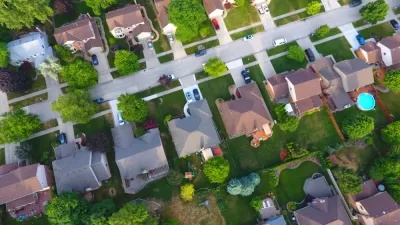NIMBYism is often expressed as concerns about crime, congestion, schools, property values, and “quality of life.” But when developments are built these fears rarely come to pass.

NIMBY stands for “Not in My Back Yard.” In the housing world it’s used to describe people, typically existing residents (especially homeowners), who oppose new housing development near their homes—particularly denser or more affordable housing.
Many housing advocates reserve the term NIMBY for residents with substantial privilege who are seeking to preserve that privilege, and not residents opposing development for other reasons, such as fear of displacement. Read more:
- “NIMBY: Where, When, and to Which Developers It Happens”
- “Who, Why, and How Communities Oppose Affordable Housing”
NIMBYism is often driven, more or less openly, by racism and classism. But the concerns more commonly voiced are about increased crime, traffic congestion, strain on sewers, overcrowded schools, and lowered property values and “quality of life.” When developments are built, however, these fears rarely come to pass. Some examples:
- “Fear of Affordable Housing: Perception vs Reality”
- Do Section 8 Voucher Holders Increase Crime in a Neighborhood?
- Does Affordable Housing Development Lower Nearby Property Values?
- “Learning from Mt. Laurel”: In the suburb whose exclusive zoning led to New Jersey’s fair share affordable housing law, research explores what the affordable housing finally built there has meant to the town—and whether anyone even knows it’s there.
Nonetheless, community opposition in the permitting stages frequently leads to increased costs and delays in many affordable housing projects. That’s something many developers don’t want to deal with. When NIMBYism is expressed through exclusionary zoning, it can keep affordable housing out of certain communities altogether.
The affordable housing field has many strategies it can use to try to overcome NIMBY opposition and get housing built in places where it has been kept out.
Win the Fight
At the individual project level, developers employ a range of community engagement strategies, rhetorical devices, and design choices to overcome, or at least ease, opposition. For example ...
FULL STORY: What Is NIMBYism and How Do Affordable Housing Developers Respond to It?

Alabama: Trump Terminates Settlements for Black Communities Harmed By Raw Sewage
Trump deemed the landmark civil rights agreement “illegal DEI and environmental justice policy.”

Planetizen Federal Action Tracker
A weekly monitor of how Trump’s orders and actions are impacting planners and planning in America.

Why Should We Subsidize Public Transportation?
Many public transit agencies face financial stress due to rising costs, declining fare revenue, and declining subsidies. Transit advocates must provide a strong business case for increasing public transit funding.

Understanding Road Diets
An explainer from Momentum highlights the advantages of reducing vehicle lanes in favor of more bike, transit, and pedestrian infrastructure.

New California Law Regulates Warehouse Pollution
A new law tightens building and emissions regulations for large distribution warehouses to mitigate air pollution and traffic in surrounding communities.

Phoenix Announces Opening Date for Light Rail Extension
The South Central extension will connect South Phoenix to downtown and other major hubs starting on June 7.
Urban Design for Planners 1: Software Tools
This six-course series explores essential urban design concepts using open source software and equips planners with the tools they need to participate fully in the urban design process.
Planning for Universal Design
Learn the tools for implementing Universal Design in planning regulations.
Caltrans
Smith Gee Studio
Institute for Housing and Urban Development Studies (IHS)
City of Grandview
Harvard GSD Executive Education
Toledo-Lucas County Plan Commissions
Salt Lake City
NYU Wagner Graduate School of Public Service




























